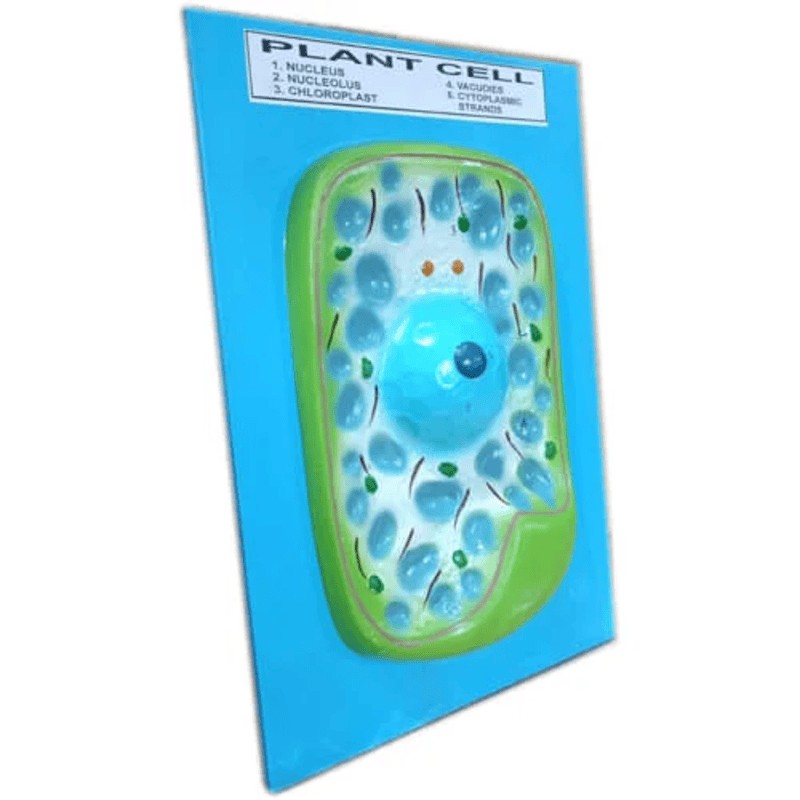
Price :
৳1250
Estimated Shipping Time: 2 to 3 days
Uses: Visual Aid , Teaching Tool
Product SKU: ato7934ijN
Model of Plant Cell on Board
Description :
A model of a plant cell on a board is a visual representation of the various structures and organelles found within a plant cell.
1.Cell Wall: A rigid outer layer that provides structural support and protection.
3.Cytoplasm: The gel-like substance that fills the interior of the cell, where or ganelles are suspended.
4.Nucleus: The control center of the cell, containing the cell's genetic material (DNA).
5.Chloroplasts: Organelles responsible for photosynthesis, converting sunlight into energy.
6.Ribosomes: Small organelles that are the site of protein synthesis.
Uses of a Model of a Plant Cell on a Board:
1.Educational Tool: It helps students visualize the complex structure of a plant cell and understand the functions of its various components.
Precautions :
1. Cell Wall: A rigid outer layer that provides structural support and protection to the cell. In plant cells, the cell wall is made primarily of cellulose.
2. Cell Membrane: A semi-permeable membrane that surrounds the cell and regulates the movement of substances in and out of the cell.
3. Cytoplasm: The gel-like substance that fills the interior of the cell, where organelles are suspended.
4. Nucleus: The control center of the cell, which contains the cell’s genetic material (DNA) and regulates cellular activities.
5. Chloroplasts: Organelles that contain chlorophyll and are responsible for photosynthesis, the process by which plants convert sunlight into energy.
6. Vacuole: A large fluid-filled sac within the cell that stores water, nutrients, and waste products. In plant cells, the central vacuole helps maintain turgor pressure and provides structural support.
7. Mitochondria: Organelles that produce energy (ATP) through cellular respiration, converting nutrients into usable energy for the cell.
No Review Found.
Login To Comment